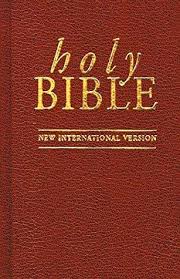1. Introduction
The study of writing provides a rich domain of cultural history and ideas which interwave the disciplines of philosophy and religion, linguistics and humanistic inquiry.
In his book entitled The Aryan Origin of The Alphabet published in London in 1927, L.A. Waddell believed that the alphabet had been invented by the Sumero-Phoenicians who were not “a Semitic people”. But Waddell’s text was produced in support of his ideological and racial stance, that is, the superiority of the so-called “Aryan” race.
John D. Ray, a British scholar, made the same historical distortion when he stated that “idea of writing” came to Egypt from Sumer.
Sumer was an ancient civilization of Mesopotamia, in the present day South Iraq, that reached the height of its power under Akkadian dynasty, founded by Sargon around 2340 B.C.
As we know, Sanchoniathon’s Book, which is a Phoenician account of genesis and cosmogony, clearly points out that writing was invented by the Egyptians and it was transmitted to the Phoenicians.
In Plato’s Phaedrus (274 c-d), Socrates reminds Greek collective memory that ta grammata, that is, “the letters”, “the writing systems” were first invented in Kemet (i.e. Ancient Egypt,) thanks to the divine principle known as Thoth.
Sir Arthur John Evans (1851-1941), a British archaeologist, who unearthed remnants of the Bronze Age Minoan civilization in Crete (an island of South East Greece in the Eastern Mediterranean Sea), believed quite rightly that most of the Cretan glyphs were borrowed from the Egyptian system of writing : see his book entitles Scripta Minoa (Oxford : Clarendon Press, 1909) with 132 illustrations, 13 plates and 26 tables.
2. New Data Found in Africa
This critical issue is now almost solved, thanks to the excavations led by Dr. Günter Dreyer, Director of the German Archaeological Institute in Cairo. The most ancient written texts in world history were then dug up at Abydos, in Upper Egypt. Some years ago, more than 200 labels were found by Dr. Dreyer and his team. It is a question of script because texts written, use ideograms as phonograms, that is, signs have phonetic value. These labels in ivory were dated by radiometric methods, and they are older than Sumerian script, which will give birth to the cuneiform system of writing.
Let us specify that a given script is the visual representation of a language, i.e. voice sounds. A system of writing is an organized set of symbols or written signs used to serve as material objects representing invisible voice sounds. To write is to form signs, i.e. characters or symbols on a surface such as stone, wood, ivory, clay, papyrus, paper with an instrument such as a chisel or a pen.
3. Actual Chronical Writing Chart in the World
The chronology for the four independent centers of writing in world history is now as follows :
– Egyptian System of Writing : The earliest hieroglyphic signs dating from about 3400 B.C. They are already used for their sound values. This system of writing was developed in three successive stages, known as hieroglyphic, hieratic, and demotic.
– Sumerian Writing : about 3060 B.C.. The Sumerian script was always on clay. The most ancient Sumerian inscriptions on tokens and seals are difficult to read because there is no firm relationship between sign and language. From about 3000 B.C. wet clay were impressed by means of a triangular shaped stylus, leaving a wedge shaped mark. The Cuneiform Writing had thus come into existence.
– Chinese Writing System : No later than the Shang Dynasty, in 1766 B.C., the earliest Chinese inscriptions found on bronze vessels and oracle bones are already highly stylised. China has the longest literary tradition that still continues today.
– Maya script : This is the script of the Maya civilization of central America having been dated from 500 B.C. to 1200 A.D. A total of about 800 glyphs have been identified.
4. Offsprings of Egyptian System of Writing in World History
The Egyptian system of writing gave birth to many other scripts. Indeed, the Egyptian writing as both a concept and a specific form, spread throughout the region of Sinai and Canaan between 1700 and 1500 B.C., giving birth to Phoenician script, and Aramaic writing.
The Aramaic writing system spread widely between the VIth B.C. to modern Hebrew script.
The Greek alphabet derives from the Phoenician one. It was the western Greek known as Chalcidian alphabet which spread through Italy and thus to Europe, beginning the basis of all modern European scripts.
The Etruscan alphabet is an offshoot of the Greek alphabet of Euboea.
Cyrillic, Glagolitic, Russian, Runic, and Roman scripts all trace their origins back to the Greek alphabet.
The writing used by the Tuareq for writing Tamasheq, one of the Berber languages of North Africa, is derived from the Old Numidian script, which is an offshoot of the Punic script. This Berber script is known as Tifinagh script. The Punic script was used in the Phoenician colony of Carthage and other parts of North Africa from the IXth century B.C. to the first century A.D..
The Ge’ez language, which for many centuries served as the language of the Ethiopia church and other literary functions, and the Amharic, that is, the national language of Ethiopia, are written with the Ethiopic syllabic alphabet which suggests a connection with other Semitic writings.
The Meroitic script is derived in the second Millenium from the Egyptian writing known as demotic. This script was used in Kush Kingdom during the Napataen period in Nubia (Northern Sudan) until the IVth century A.D. when it was gradually superseded by Old Nubian Alphabet, which is in fact Greek alphabet like Coptic alphabet. But the Meroitic language is little understood (see Imhotep Newsletter – n¡2 “Meroitic script and computer”, San Francisco State University, February 1999).
5. African Script Found Outside of the Nile Valley
There are various African writing systems studied ; for example, by the following scholars :
– African Scripts by Cheikh Anta Diop (1954)
– Obe ri Okainme Script (Southern Nigeria) by Kathleen Hau (1967)
– Indigenous Scripts of Liberia and Sierra Leone by David Dalby (1967)
– Systematic Comparison between Egyptian Script and Vai, Mende, Loma, Kpelle, Nsibidi, Bamun, and Gicandi Scripts by Théophile Obenga (Paris, 1973)
– Writing, Text, and Africa by Simon Battestini (1994).
6. Conclusion
Africa is the cradle of writing for the following facts :
a) Writing originated in the Nile Valley with texts dated back to 3400 B.C., that is, labels in ivory found at Abydos.
b) This was the Egyptian script which gave birth to many other scripts still in use, such as Hebrew, Greek, Ethiopic, and Roman alphabet.
c) The Sumerian and Cuneiform scripts were born and died within Mesopotamia ; they were never used outside Mesopotamia and the Near East.
d) The important theoretical issues concerning the relationship between speech and writing, and the scientific study of writing, must now take seriously in account African variety of writing systems in a global or multicultural perspective.
e) The scientific fields that are interested in writing, as history and palaeography, psychology, linguistics, and sociology, must now look more closely to African writing systems, because Africa is not only the cradle of all humans but also the cradle of writing. The first human beings to write their mother tongue were people of Kemet or Ancient Egypt.
The study of writing provides a rich domain of cultural history and ideas which interwave the disciplines of philosophy and religion, linguistics and humanistic inquiry.
In his book entitled The Aryan Origin of The Alphabet published in London in 1927, L.A. Waddell believed that the alphabet had been invented by the Sumero-Phoenicians who were not “a Semitic people”. But Waddell’s text was produced in support of his ideological and racial stance, that is, the superiority of the so-called “Aryan” race.
John D. Ray, a British scholar, made the same historical distortion when he stated that “idea of writing” came to Egypt from Sumer.
Sumer was an ancient civilization of Mesopotamia, in the present day South Iraq, that reached the height of its power under Akkadian dynasty, founded by Sargon around 2340 B.C.
As we know, Sanchoniathon’s Book, which is a Phoenician account of genesis and cosmogony, clearly points out that writing was invented by the Egyptians and it was transmitted to the Phoenicians.
In Plato’s Phaedrus (274 c-d), Socrates reminds Greek collective memory that ta grammata, that is, “the letters”, “the writing systems” were first invented in Kemet (i.e. Ancient Egypt,) thanks to the divine principle known as Thoth.
Sir Arthur John Evans (1851-1941), a British archaeologist, who unearthed remnants of the Bronze Age Minoan civilization in Crete (an island of South East Greece in the Eastern Mediterranean Sea), believed quite rightly that most of the Cretan glyphs were borrowed from the Egyptian system of writing : see his book entitles Scripta Minoa (Oxford : Clarendon Press, 1909) with 132 illustrations, 13 plates and 26 tables.
2. New Data Found in Africa
This critical issue is now almost solved, thanks to the excavations led by Dr. Günter Dreyer, Director of the German Archaeological Institute in Cairo. The most ancient written texts in world history were then dug up at Abydos, in Upper Egypt. Some years ago, more than 200 labels were found by Dr. Dreyer and his team. It is a question of script because texts written, use ideograms as phonograms, that is, signs have phonetic value. These labels in ivory were dated by radiometric methods, and they are older than Sumerian script, which will give birth to the cuneiform system of writing.
Let us specify that a given script is the visual representation of a language, i.e. voice sounds. A system of writing is an organized set of symbols or written signs used to serve as material objects representing invisible voice sounds. To write is to form signs, i.e. characters or symbols on a surface such as stone, wood, ivory, clay, papyrus, paper with an instrument such as a chisel or a pen.
3. Actual Chronical Writing Chart in the World
The chronology for the four independent centers of writing in world history is now as follows :
– Egyptian System of Writing : The earliest hieroglyphic signs dating from about 3400 B.C. They are already used for their sound values. This system of writing was developed in three successive stages, known as hieroglyphic, hieratic, and demotic.
– Sumerian Writing : about 3060 B.C.. The Sumerian script was always on clay. The most ancient Sumerian inscriptions on tokens and seals are difficult to read because there is no firm relationship between sign and language. From about 3000 B.C. wet clay were impressed by means of a triangular shaped stylus, leaving a wedge shaped mark. The Cuneiform Writing had thus come into existence.
– Chinese Writing System : No later than the Shang Dynasty, in 1766 B.C., the earliest Chinese inscriptions found on bronze vessels and oracle bones are already highly stylised. China has the longest literary tradition that still continues today.
– Maya script : This is the script of the Maya civilization of central America having been dated from 500 B.C. to 1200 A.D. A total of about 800 glyphs have been identified.
4. Offsprings of Egyptian System of Writing in World History
The Egyptian system of writing gave birth to many other scripts. Indeed, the Egyptian writing as both a concept and a specific form, spread throughout the region of Sinai and Canaan between 1700 and 1500 B.C., giving birth to Phoenician script, and Aramaic writing.
The Aramaic writing system spread widely between the VIth B.C. to modern Hebrew script.
The Greek alphabet derives from the Phoenician one. It was the western Greek known as Chalcidian alphabet which spread through Italy and thus to Europe, beginning the basis of all modern European scripts.
The Etruscan alphabet is an offshoot of the Greek alphabet of Euboea.
Cyrillic, Glagolitic, Russian, Runic, and Roman scripts all trace their origins back to the Greek alphabet.
The writing used by the Tuareq for writing Tamasheq, one of the Berber languages of North Africa, is derived from the Old Numidian script, which is an offshoot of the Punic script. This Berber script is known as Tifinagh script. The Punic script was used in the Phoenician colony of Carthage and other parts of North Africa from the IXth century B.C. to the first century A.D..
The Ge’ez language, which for many centuries served as the language of the Ethiopia church and other literary functions, and the Amharic, that is, the national language of Ethiopia, are written with the Ethiopic syllabic alphabet which suggests a connection with other Semitic writings.
The Meroitic script is derived in the second Millenium from the Egyptian writing known as demotic. This script was used in Kush Kingdom during the Napataen period in Nubia (Northern Sudan) until the IVth century A.D. when it was gradually superseded by Old Nubian Alphabet, which is in fact Greek alphabet like Coptic alphabet. But the Meroitic language is little understood (see Imhotep Newsletter – n¡2 “Meroitic script and computer”, San Francisco State University, February 1999).
5. African Script Found Outside of the Nile Valley
There are various African writing systems studied ; for example, by the following scholars :
– African Scripts by Cheikh Anta Diop (1954)
– Obe ri Okainme Script (Southern Nigeria) by Kathleen Hau (1967)
– Indigenous Scripts of Liberia and Sierra Leone by David Dalby (1967)
– Systematic Comparison between Egyptian Script and Vai, Mende, Loma, Kpelle, Nsibidi, Bamun, and Gicandi Scripts by Théophile Obenga (Paris, 1973)
– Writing, Text, and Africa by Simon Battestini (1994).
6. Conclusion
Africa is the cradle of writing for the following facts :
a) Writing originated in the Nile Valley with texts dated back to 3400 B.C., that is, labels in ivory found at Abydos.
b) This was the Egyptian script which gave birth to many other scripts still in use, such as Hebrew, Greek, Ethiopic, and Roman alphabet.
c) The Sumerian and Cuneiform scripts were born and died within Mesopotamia ; they were never used outside Mesopotamia and the Near East.
d) The important theoretical issues concerning the relationship between speech and writing, and the scientific study of writing, must now take seriously in account African variety of writing systems in a global or multicultural perspective.
e) The scientific fields that are interested in writing, as history and palaeography, psychology, linguistics, and sociology, must now look more closely to African writing systems, because Africa is not only the cradle of all humans but also the cradle of writing. The first human beings to write their mother tongue were people of Kemet or Ancient Egypt.





